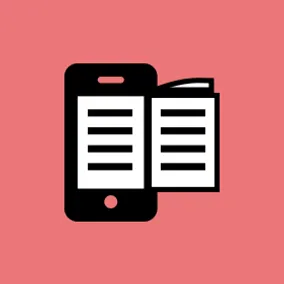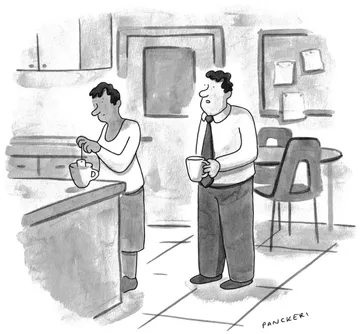Inbox (1): Why Newsletters Matter

Jessica Sheng, Former Senior Project Manager
Article Category:
Posted on
Plain ol’ email has seen a resurgence in recent years as an effective relationship-building tool for brands, companies, and individuals. Here's why I think newsletters are innovative and meaningful editorial products in the current media landscape.
As cultural platitudes would lead us to believe, email is something to groan about: it’s tedious, and carries connotations of outdated workplace norms (inefficiency, bloat) that modern technology hopes to obliterate. After all, wasn’t email supposed to become obsolete at least a decade ago?

But I’m an ardent advocate for email -- or at least, one specific kind of email: the humble newsletter.
Plain ol’ email has seen a resurgence in recent years as an effective relationship-building tool for brands, companies, and even individual people. News organizations in particular have gained a ton of success with newsletters as a product unto itself, ushering in an entire industry of sorts.
I read a lot of newsletters, and I’ve also written for a few different dispatches over the past few years (shoutout to The Idea and 730DC). We also have our very own newsletter here at Viget where we feature staff perspectives on trends, tools, and how we build great digital experiences for our clients.
Read on to see why I think newsletters are both innovative and meaningful editorial products in the current media landscape, particularly against the backdrop of a global pandemic and stirring activism in the fight for racial justice, when more people are opening email than ever before.
What’s in a newsletter?
I subscribe to about a dozen email newsletters or so. I usually start my mornings with a local DC-focused newsletter and the NYTimes Daily Briefing. Throughout the day or week, dispatches from Bloomberg CityLab, The Verge, Ann Friedman, Hot Pod, and more roll into my inbox, and I generally try to read all of them if I can, even if it means stockpiling some unreads to open and read altogether later.
I thought about why I elect to saturate my inbox more than necessary, and I came up with a few reasons; a love letter to a newsletter, if you will:
- First, there’s a mutual connection. There’s an implied connection between the sender and the reader: The only way a newsletter arrives in an inbox is through an active opt-in. Reading a newsletter tends to feel intimate, almost like you’re listening to someone think aloud in prose. Someone who does this well is Delia Cai of Deez Links, a daily newsletter sharing one interesting/thought-provoking/funny story that’s happening in media and culture.
- Second, it’s reliable and consistent. Newsletters have an established delivery cadence, and similar to the one weeknight where your favorite show is on, or the day that a new episode of your podcast drops, this routine cultivates habits and perhaps even small moments of delight throughout our week. Pavlovian dogs, we are.
- Third, the more focused the content, the better. I can find a newsletter on any one of my curiosities, interests, and values. Topics of newsletters I subscribe to range from running, rent-week recipes, design, and musings from independent writers, technologists, creatives. When I was planning for a trip to Japan this past spring (womp), and the 5AM Ramen newsletter supplied some targeted inspiration. In the era of COVID-19, national and local media companies have established reliable newsletters to deliver updates and critical information to make sense of a confusing and often-times frustrating time.
- Finally, a newsletter is beautifully simple. Or at least, the reading experience should be, even though it likely belies the hard work of putting an issue together. The curated content meets me where I am, every day, in my inbox. It’s not engineered to go viral - you read it in a sitting, and it cuts through the noise. You read, you scroll, you get to the bottom, and that’s it. It’s finite, and there’s closure.
And in my research, I saw this last point come up pretty often, and it’s especially relevant given today’s feeds. Newsletters help us figure out what to pay attention to, and as a medium, is flexible enough to cushion news or thoughts with context and additional resources.
The state of the newsletter
So it makes sense that newsletters are on the rise as we’re overloaded with information. There’s an audience and an appetite for newsletters, and industry players are capitalizing on it.
Here’s one example: Substack is a newsletter platform service launched in 2017 that allows creators to launch free or paid newsletters. They raised $15.3 million in Series A funding last year, and the number of new newsletters created on Substack are up 40% month over month. It democratized the business of content creation, allowing writers to cultivate direct relationships with audiences who value their work, and on their own terms.
It’s not just indie writers that are buoying the newsletter scene though. Like I mentioned, I read the New York Times Morning Briefing most mornings on my commute into work – well, when I was commuting to work. That newsletter is one out of 70+ newsletters the Times currently offers, and this one has 17 million subscribers. Gross open rate in 2015 was about 50%, compared to the industry average of 38.5% which is still high. And this engaged audience has paid off because in the second quarter that year, the Times posted a $24 million profit margin, largely due to new digital subscribers. This is important because they found that newsletter subscribers who started out with free newsletters, like the Daily Briefing, were twice as likely to end up forking over the cash and sign up for a digital subscription. And with 4 million current subscribers, there’s a big opportunity.
So, there’s a lot to explore in the newsletter scene, and there’s more going on that lies beyond the scope of this article. If you’re interested in learning more, NiemanLab is a great resource covering the evolving landscape of journalism and the business of media. Dan Oshinsky’s monthly Not a Newsletter rounds up news, ideas, and tips for email content that was instrumental in helping me compose this blog.
If you want to find newsletters to check out, LifeHacker put out a roundup of favorite staff newsletters last year that had a bunch of good ones. But really, personal recommendations or word of mouth (Twitter counts, in my opinion) are still some of the most valuable referral mechanisms. I started a Slack channel dedicated to newsletters here at Viget, and I love to see coworkers suggesting a newsletter that they found to be meaningful in some way.
And if you’re not sold on the idea of newsletters and still hate email, that’s fine. I think there is another takeaway here:
We work in an incredibly dynamic industry. We don’t really know what we’ll be working on in another 40 years. So it’s worth asking: when everything is changing, what’s staying the same? And how do we make what’s familiar, better?